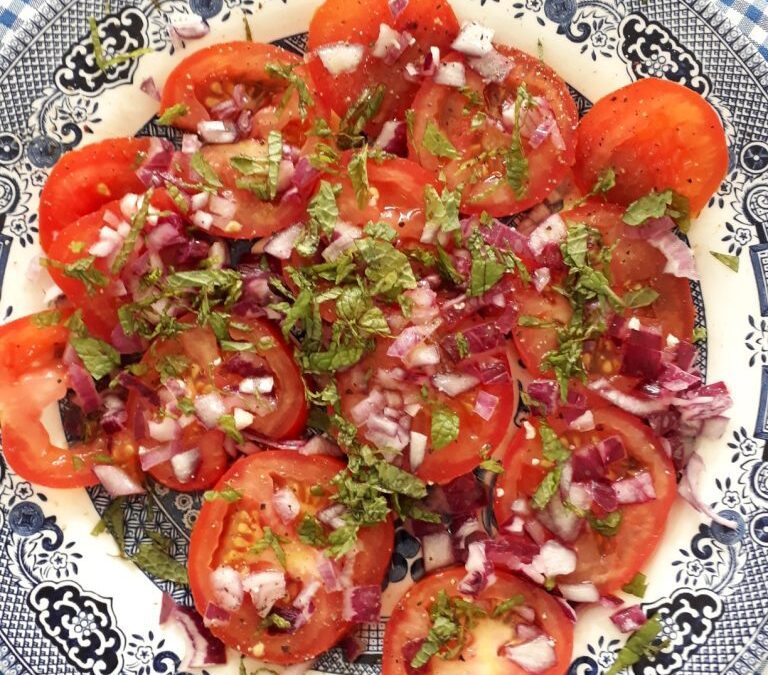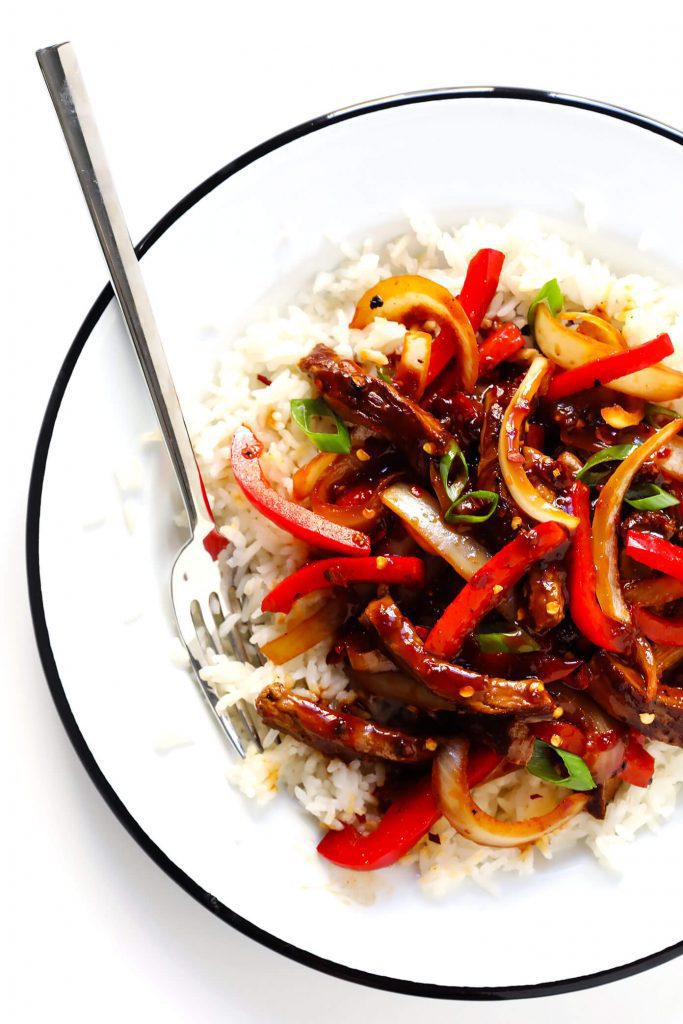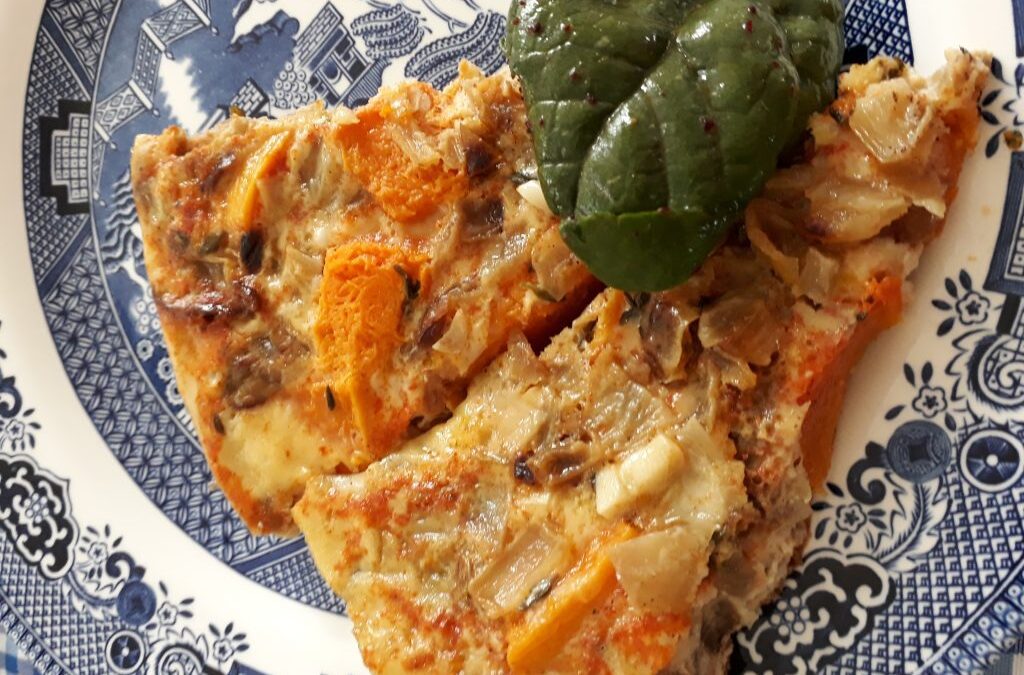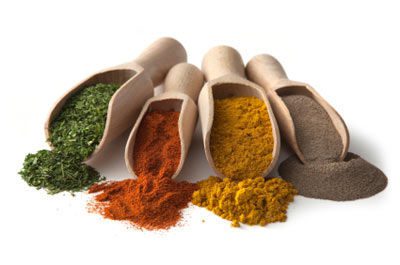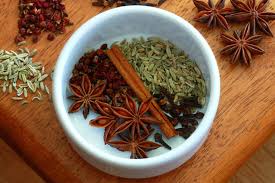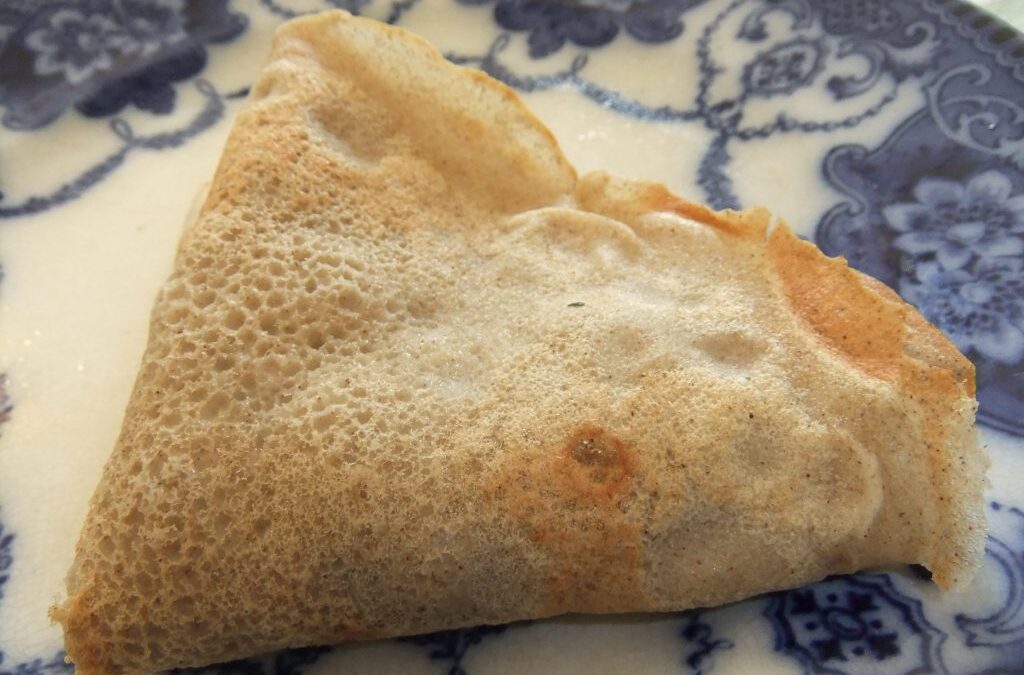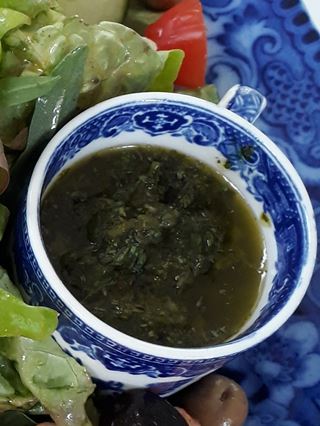
Jul 6, 2020 | Anna's Best Recipes, Sides, starters, soups & snacks
Had this last night with some herb roast chicken and roasted cauliflower sprinkled with sumac. Fab. the recipe is courtesy of Domini Kemp and Patricia Daly’s Ketogenic Kitchen. If you are doing ketogenic diet and want to track carbs, protein etc, get the fatsecret app – even the free version is great.
For 4
4 large ripe beef tomatoes (1200g) 0r equivalent weight of vine tomatoes
Natural Himalayan/sea salt
Black pepper
1 medium red onion, finely diced
Small bunch of mint, finely chopped
1 large garlic clove, crushed
80ml extra virgin olive oil
Juice of 1 lemon or a splash of sherry vinegar
Macronutrients per serving: Net carbs 12.2g, protein 2.8g, fat 25.9g, fibre 4.1g
- Slice tomatoes into rounds, lay the slices out on a platter and sprinkle with salt.
- Leave for 20 minutes or more. This makes the tomatoes release their juices.
- Drain off juices and whisk together with the other ingredients.
- Add freshly ground black pepper to taste, and pour the dressing over the tomatoes. Serve.
Why this is good for you
Did you know that every vegetable, herb, spice and fruit contains a range of polyphenols (sorry, potatoes and bananas don’t contain many!). Polyphenols defend plants against threats e.g. viruses, fungi, bacteria, predators and UV rays. When you eat polyphenols they help strengthen all your body tissues and protect you against all chronic health conditions . Organic plants have more polyphenols because they are exposed to attack. They are not cocooned by pesticides and herbicides (herbicides kill soil bacteria). Attack stimulates plants to upregulate their defences – polyphenols. It’s a bit like when you train at the gym – you tear muscle fibres and the damage stimulates muscle to grow back bigger and stronger.
We absolutely need to be eating a wide range of plants including herbs and spices, over the course of every week. Tomatoes, mint, extra virgin olive oil, lemon juice, garlic all contain a big range of polyphenols. Tomatoes alone contain hydroxycinnamic acids, flavanones, flavonols, and anthocyanins, rutin and kaempferol-3-rutinoside and a lot of naringenin chalcone.
Raw extra virgin olive oil is a fantastic source of vitamin E. Vitamin E is anti-viral because it helps vitamin C work longer in your body. It also moisturises all your surfaces, outside and in. It is essential for the health of your heart, your skin, your brain, everything. Only VERY expensive vitamin E supplements contain the full range of vitamin E compounds. But if you eat many plants, a variety of raw nuts and seeds, lots of extra virgin olive oil and your digestive system is working perfectly you will be getting more vitamin E than most.

Jun 1, 2020 | Anna's Best Recipes, Desserts & drinks
I first tasted almond milk in its traditional Italian form 20 years ago in Puglia. It was a beating hot day in the city of Lecce and we were given large glasses of iced sweet almond milk. It tasted amazing. I prefer something that’s a little more vitality-enhancing (i.e. not full of pro-inflammatory, immune sabotaging added sugar) so here’s my take.
Use this drink in place of animal milk OR for a summer cooler add liquid stevia to sweeten, a bit more water, lots of ice and maybe a couple of drops of natural almond extract.
100g almonds, soaked overnight in filtered water (you don’t need blanched almonds)
1 teaspoon vanilla extract (if you are glulten-free make sure to avoid vanilla “essence”)
1.25 litres filtered water
Drain the soaked nuts, blend with the filtered water.
Strain through a nut milk bag or muslin cloth, milking it to squeeze out all the liquid.
Add the vanilla extract, mix and serve.
Tip:
If you want to get more “value” from your almonds, blitz the soaked nuts with just 3/4 l of water. Strain through the nut milk bag. Put the ground nuts into the blender again with the remaining 3/4L water. That way you will find you get more almond milk out of the nuts.

May 27, 2020 | Anna's Best Recipes, Main courses
I love stir fries especially when I want to use up what’s lurking in the bottom of the fridge. I think there are 6 elements in a good stir fry:
1. Aromatics: ginger, tamari sauce plus Chinese 5 spice powder or Szechuan pepper
2. Onions or spring onions
3. Vegetables: greens plus something else brightly coloured
4. Extra virgin coconut oil and/or chicken stock for the actual stir frying and cooking
5. Protein: e.g. chicken fillets, beef sirloin, tempeh, fermented tofu, prawns
6. Extra liquid: I like a glug of white wine/dry sherry and/or a chicken/veg stock/water
One of the keys is to have all ingredients totally prepped before you start to stir fry, that way the actual cooking can take as little as 10 minutes. Get your accompaniment (rice/cauliflower rice/noodles) ready and waiting in a warm place before you start stir frying.
Once you are used to making stir fries you’ll start adding your own twists, using additional veggies and making this your own.
For 2
1 heaped teaspoon extra virgin coconut oil
1 large onion (about 200g is nice)
2 large red peppers/2 medium carrots (or 1 pepper 1 carrot)
1 thumb of ginger (enough to make a heaped dsp or a bit more)
2 large cloves of garlic, finely chopped
1 heaped tsp Chinese 5 spice powder – if you make your own it’s amazing https://www.annacollins.ie/chinese-five-spice-powder/
2 large handfuls greens: e.g. green cabbage/kale, pak choi, or 2 cups small broccoli florets
Tamari sauce – about 2 tbs
Optional – about 2 tbs white wine or dry sherry
50-100ml vegetable or chicken stock or boiling water (Kallo stock cubes or Vecon vegetable bouillon powder are good)
Protein: 250g chicken fillet/beef sirloin or 300g tempeh or fermented tofu
Optional: 1 slightly rounded tsp arrowroot powder/cornflour to thicken the sauce
To serve:
2-3 cups cauliflower rice https://www.annacollins.ie/cauliflower-rice OR 100g basmati rice (dry weight)
1.Peel and cut onion in half lengthways then cut into wedges (like segments of an orange)
2.Slice red peppers 1cm thick/peel carrots and cut into thin matchsticks or slices.
3. Peel and chop the ginger finely. Set aside the onion, carrot/peppers and ginger – they will be added to the pan together.
4.Measure out 5 spice powder and set aside.
5.Shred greens/slice pak choi into 3cm lengths/break broccoli into small florets, chop garlic finely and set aside.
6. Prep your protein: trim chicken/beef of skin/fat, slice thinly across the grain (less than 1cm thick). If you are using tempeh/fermented tofu cut it in small bite sized cubes.
7. Measure out the tamari sauce with the sherry/wine if using and set aside.
8. Boil the kettle. If you have chicken stock/veg stock cube make up about 50-100ml, otherwise plain hot water will do.
9.Heat your frying pan or wok on a medium heat, add the coconut oil and when it’s melted add the onion, red peppers/carrots and ginger and the 5-spice powder. Stir fry till the onions are starting to get translucent and the carrots/peppers have softened a little. If it starts to “catch” add a splash of stock or water to the pan and stir will it’s all unstuck.
10.Add the garlic, shredded/sliced greens/broccoli florets, meat or tempeh the tamari sauce, sherry/wine, give it a stir to coat and cover the pan with a large place or a lid. You want everything to steam until the greens are softened enough to eat but not so cooked that they lose their fresh colour.
11.After a few minutes, stir and check that the meat is getting in contact with the heat and cooking through.
12. When the meat/tofu/tempeh is cooked through check the liquid levels.
13. If you like your sauce thickened, combine 1 tsp cornflour/arrowroot with a few tablespoons of cooled stock or water, mix to amalgamate. Pour on to the pan, stirring well until it’s all cooked (a couple of minutes), adding a splash or water of stock if you think its too thick. Once its thickened and no longer has a chalky taste, its cooked.
Serve with:
Cauliflower rice or rice
Why this is good for you:
Having a big diversity of vegetables, herbs and spices in your weekly eating fosters diversity of friendly bugs in your large intestine. This is important for ALL aspects of your health. Good bugs are critical for mood, getting autoimmune conditions into remission, regulating your weight your blood pressure and even blood sugar. Yes, even diabetes responds to a change in gut bacteria. In short, if want to get well, or continue to enjoy fantastic health, you need plenty of types of good bugs living happily in you.
Garlic and spices selectively reduce numbers of “bad” gut micro organisms and encourage growth of helpful ones. Avoiding polyunsaturated vegetables oils and switching to extra virgin coconut oil (or extra virgin olive oil) for cooking means reducing the toxic trans fats that sabotage the function of every cell in your body.
Quality protein needs to make up 1/4 of your every meal. You need enough protein to be resilient to stress, to power detoxification of normal (and environmental) toxins, and to support your immune system. GMO-free Tempeh or fermented tofu are the highest protein vegan food sources. By soya milk, soya “cheese”, and unfermented tofu are high in substances called lectins, which can cause damage and inflammation in our gut. Damage in your gut fuels ALL chronic health issues from acne and anxiey.
Green veg are a rich source of magnesium, Nature’s Tranquiliser – important for over 400 metabolic processes in YOU. Happy eating!

May 14, 2020 | Anna's Best Recipes, Main courses
Today I wanted to make a version of a frittata with lots of thyme. It’s a superfood and amazing for your lungs – helping protect them from damage and alfor breakfast or brunch over a few days. This recipe is one you can adjust as you like. If you don’t have squash, cooked broccoli florets would also work well. If you are NOT on the SC diet, sweet potatoes are another option.
The essentials of a frittata are onions, garlic, eggs and extra virgin olive oil and some sort of additional vegetable.
For 4
8 large eggs, ideally organic
1 large onion (200-250g)
2 cloves garlic, crushed.
Half a large butternut squash, peeled (you want around 450g flesh for the recipe)
Half level tsp Himalayan salt or sea salt
Generous handful of fresh thyme, rinsed and dried
3-4 tbs extra virgin olive oil
Optional extras: 1 dsp finely chopped sage leaves and/or 1 level tsp paprika
Heavy-bottomed frying pan that can be put under your grill
- Preheat oven to 200C(or 180C for a fan oven).
- Scatter thyme, stalks and all, into a roasting tin, add the squash, 1 tbs olive oil, sprinkle on the salt, some freshly ground black pepper and toss well.
- Roast for 45-60 minutes (giving it a toss half way through) until the flesh is soft when pierced.
- Meanwhile peel and chop your onions (about 1cm squares is nice). Add to a heavy bottomed frying pan along with 2 tbs olive oil 1 tbs of water and steam fry on a medium heat till translucent and soft. Steam frying is using a mix of oil and water and covering with a lid/plate and gently cooking till soft. This technique avoids the browning that damages food (and causes us inflammation).
- When squash is done (softish), remove from oven, let it cool a bit, then poke through, gathering up the thyme sprigs.
Pull the leaves off with your fingers (yes, you will get messy!) and add back into the squash. Throw away the bare twiggy bits. - Beat 8 eggs with a generous pinch of black pepper, a pinch of salt and (if using) some paprika/finely chopped sage or both.
- Add the cooked squash and thyme, 2 cloves of crushed garlic to your cooked onions, give a stir and flatten down.
- Pour on the eggs and cook on a low heat for at least 25 minutes until the egg is set. I cover with a plate/lid during cooking to speed it up but you don’t have to.
- If you feel like it, flash the whole thing (but not any plastic handle!) under a hot grill for a few minutes to brown the top.
Serve hot or at room temperature with:
A big crunchy salad of green leaves dressed with my Mediteranean salad dressing (also on blog).
Why this is good for you:
Using extra virgin olive oil instead of low grade cooking oils helps make this healthier. All polyunsaturated nut/seed oils are toxic when heated or refined. Extra virgin olive oil, and virgin coconut oil are not polyunsaturated and so are much more stable when heated. This means they don’t do you harm.
Thyme helps your lungs function better, resist infection more, and helps prevent/treat coughs. There is a tide of high quality peer-reviewed research on medline about the bronchial benefits of thyme. Orange veggies are a rich source of beta carotene which in your diet also protects your lungs.
Onions are rich in inulin, a type of “prebiotic” fibre. Prebiotic fibres feed good gut bacteria which are so critical for your immunity. Over 70% of your immune cells live in your gut. Your immune cells are controlled in large part by the bacteria, fungi and viruses (yes viruses can be useful) that live in you. So eating a big variety of veg, herbs and spices gives a friendly environment for “good” critters to grow and help you. In fact there are more cells belonging to critters in and on you than make up you. Its just that the cells of micro organisms are a lot smaller than human cells!

May 8, 2020 | Anna's Best Recipes, Desserts & drinks, Dressings, rubs, spreads, sauces & more
When I was in Marrakech last year I had a lovely concoction called cafe aux epices – literally coffee with spices. I like to make my coffee as normal, add the spices and then the milk or plant milk. Do remember to buy spices as fresh as possible and store airtight in a dark and ideally cool place. This prevents them losing their potency and flavour. There is a world of difference between stale and fresh spices.
I would suggest the only spice that’s really essential is the Ceylon cinnamon, everything else is mix and match according to your preference.
6 teaspoons ground Ceylon cinnamon
1 teaspoon ground cardamom
1/2 teaspoon of one or more of the following:
Ground cloves
Ground aniseed/fennel
Ground black pepper
Ground ginger
Why this is good for you:
Did you know that you have a very individual metabolic response to caffeine? If you (like me) have the genetic variant of the CYP1A2 gene then having more than 1 cup a day increases risk of high blood pressure and heart disease. This is why studies in the past have produced conflicting results on how coffee affects heart health. BUT just a cup a day can be beneficial for most of us. However some people with digestive issues may need to skip coffee and substitute dandelion coffee (try www.intelligenttea.ie mail order ground dandelion coffee – its delicious). Lighter roast coffee contains more beneficial polyphenols than dark. Polyphenols modify your good bacteria in favour of the good guys that help immunity and reduce inflammation.
Spices have an antioxidant effect. They stimulate your body to make more antioxidants. This is a great idea if you prefer not to struggle with inflammation. All common chronic health conditions of are driven by inflammation e.g. heart disease, asthma, eczema, depression, autoimmune conditions (e.g. hypothyroidism, Crohn’s) and cancer. Tens of thousands of high quality research papers published in peer reviewed scientific journals confirm the various health benefits of spices. By the way, Ceylon cinnamon helps you regulate blood sugar levels. So if you have insulin-resistence (pre-diabetets) or type II diabetes a teaspoon of Ceylon cinnamon a day is a fantastic thing to add in – whether in coffee/coffee substitutes, mixed in porridge/granola or in curries.

Mar 27, 2020 | Anna's Best Recipes, Dressings, rubs, spreads, sauces & more
Did you know that shop-bought spice mixes often contain gluten which is not always listed on the packet? Anyway that’s only really relevant for you gluten-sensitive people out there.
Once you taste this beautiful five spice powder in your stir fries, sprinkled on salmon before grilling, or in a home made hotpot you will never want to go back to commercial, tasteless five spice. Do keep your spices in airtight glass jars somewhere dark. Left in the sun, they lose their marvelous antioxidant potency and their taste too. All spices have hundreds (and some thousand) of peer-reviewed clinical research papers showing various health benefits. When you cook food with spices the food generates fewer toxic by-products (e.g. from grilling, sauteeing or roasting) and the spices stimulate your body’s own antioxidant defences.
1 dsp (dessertspoon) ground Ceylon cinnamon
1 dsp ground cloves
1 dsp fennel seed, ground
1 dsp ground star anise
1 teaspoon Szechuan peppercorns, ground
Electric coffee grinder or spice grinder
1.Grind your fennel, star anise and peppercorns.
2.Mix the spices together and store in an airtight jar somewhere dark.

Feb 21, 2020 | Anna's Best Recipes, Desserts & drinks
I LOVE these. Heard a recipe on the radio using cheese but I swapped it out for full fat thick natural yogurt or strained kefir (you strain the kefir through a muslin in a sieve to thicken it) an it’s DELICIOUS. I quite like my pancake Tuesday pancakes with lemon juice and some honey or Dr Coys Erylite or Xylitol to sweeten. But you could use stewed apple, apple puree and a big dollop of cream or non-dairy coconut yoghurt on top if you feel the urge. If you are a bit dairy sensitive like me, home-made kefir could be the one form of dairy that you can tolerate really really well. That’s because the process completely breaks down the lactose, as well as the casein protein, which is what most people have a problem with. YUM!! Would you like me to do a post on how to make kefir? If so, give me some feedback.
Makes 4 large pancakes (you can use normal oats/oat flour if you are not gluten-sensitive)
50g gluten-free oats, blitzed in the food processor to make a flour (or use Merry Mill gluten-free oat flour from good health stores like the Hopsack in Dublin 6)
4 eggs, organic if possible
Pinch of salt
1/2 tsp Ceylon cinnamon powder
1/2 tsp vanilla powder or extract (avoid “essence” – it contains gluten)
10 drops pure stevia (optional) – I like “sweet drops of stevia” form health stores
150ml (10 tbs) natural full-fat yogurt, Greek yogurt or thickened kefir (strain home-made kefir through a sieve lined with muslin/kitchen paper and use the thick stuff that remains)
Optional: 1/2 tsp gluten-free baking powder (makes a fluffier, higher pancake, more like a drop scone)
- Bitz all the ingredients together in a blender (or using a large bowl add the dry ingredients and mix well. Make a well in the middle of the dry ingredients, add the eggs, mix with a wooden spoon, add the wet ingredients and beat until everything is smooth.
- Cook on the pan using extra virgin coconut oil, avocado oil or (a bit less healthy) light olive oil.
- Enjoy…
Why this is better for you:
Ceylon cinnamon helps balance your blood sugar and prevent diabetes!! Stevia is a more natural sweetener than most others and contains no calories. Like erythritol and xylitol from health stores, stevia does not raise your blood sugar levels – so this is a friendly recipe for anyone who cares about their health or has blood sugar issues like diabetes.
Oats are a great source of soluble fibre, which feeds some of your good gut bacteria to help all aspect of your health, mental and physical. So much better than wheat because lower in gluten. Published video evidence now proves that gluten damages your small intestine for at least 3 hours. This study was done on non-gluten-sensitive people. Yes, that includes all your normal people out there. Damaging your gut allows undigested food, bacterial cell walls and toxins to spill into your bloodstream. This eventually compromises your health by inflaming either your brain or other parts of you.
Eggs are a high quality source of protein and (if they are organic) omega 3 fatty acids and phospholipids which our brains and cell membranes need for every function of our body. Please don’t be afraid of eggs (unless you are sensitive or allergic). Eggs do not give you heart disease. The 1950’s study showing eggs cause heart disease was carried out on rabbits. Rabbits are vegan! Unlike us, they can’t cope with animal protein. The real culprit with heart disease is a high grain carbohydrate diets, inflammation and lack of beneficial fats, quality protein and vegetables, herbs and spices.

Feb 7, 2020 | Anna's Best Recipes, Dressings, rubs, spreads, sauces & more
Every herb has healing properties so herb pesto isn’t just about making your food taste even better. Herbs stimulate your body to make more antioxidants. But herbs also have a selective antibiotic effect. That is, every herb has action against certain disease-causing bacteria* AND encourages growth of friendly bacteria in your gut. Different herbs discourage different “bad” bugs.
For the most powerful health effects place the pesto in a clean glass/ceramic jar and leave to ferment on the kitchen counter for 2 days before using. The fermentation potentiates the polyphenols (beneficial plant compounds) making them more usable by your body. Using the garlic helps keep the pesto fresher but isn’t essential. If any fluffiness develops on the top of you pesto just scrape it off before using.
The proportions of ingredients to each other don’t really matter so long as you end up with something that’s not too runny.
A generous handful of one fresh herb: Thyme, oregano, parsley, mint, sage, coriander, basil, tarragon, dill are all good. Rosemary is fantastic as well but very strong-tasting – maybe do 1/2 and 1/2 with parsley.
Extra virgin olive oil to bind (1/2-1 cup)
Optional: 2 large cloves freshly crushed garlic
- Wash the herbs, remove any woody stems (for soft herbs like dill, parsley and basil you use the whole stem so long as its soft).
- If using a mini food processor cut the herbs roughly into 2cm lengths then blitz with the garlic and 1/2 cup of the olive oil until you get a paste. If the food processor isn’t catching the herbs you can add more oil to make it all go round.
If making the pesto by hand chop the herbs finely (a mezzaluna or a large knife with a smooth curved blade is good for this). In a bowl mix with the garlic and extra virgin olive oil. - Decant into a clean glass or ceramic jar covered with a saucer, a piece of muslin, or the lid laid loosely on top. Leave at room temperature for 48 hours before starting to eat. It will be fine for a week in the fridge.
Tip: if the pesto starts to go very brown (this happens with basil and coriander) add a thin layer of extra virgin olive oil on top to help preserve the colour.
Good to know:
Did you know that many gut bacteria are normal in certain amounts but toxic if they overgrow. For example the yeast-like fungus known as candida. Small amounts in your gut are normal but when you have a high carbohydrate diet or take antibiotics or acid-blocking drugs candida can take over. It develops a filamentous form (hyphae) which invade your gut lining and cause damage. Food sensitivities, digestive symptoms, autoimmune conditions (e.g. hypothyroidism) and even mood changes can result.

Jan 9, 2019 | Anna's Best Recipes, Main courses

Mustard-baked mackerel
This is is a super simple recipe I concocted today, inspired by a Nigel Slater recipe. Its ideal for a one-person dinner, or for a family. The mustard and lime lift the richness of the oily fish and are amazing for you too.
For 2:
2 fresh mackerel fillets
1 dsp coarse grain mustard
1 dsp fresh lemon or lime juice
Generous pinch black pepper
Pinch Himalayan salt/sea salt
1/2 tsp dried tarragon if you have it
A little olive oil to grease your roasting tin
To serve:
2 cupfuls sliced carrots
4 cupfuls broccoli florets
1. Heat your oven to 200C and while it is heating steam your vegetables and keep warm.
2. In a little bowl mix the mustard, pepper, salt, citrus juice and (if using) tarragon.
3. Oil your roasting tin, lay the fish skin side down, slather with the mustard mix and bake for 12-15 minutes. When the fish is done, it will no longer be translucent and the point of a knife or skewer will go through it easily.
4. Enjoy.
Why this is good for you:
We all know that omega 3 oils from wild mackerel are great for our brains and hearts. But did you know that having enough omega 3 affects every cell in your body – from helping you avoid diabetes (or get rid of it if you have it), to helping your body react efficiently to all your horrnones. Eating more oily fish is a no-brainer. Mackerel is one of the best oily fish as its always wild so its leaner and cleaner. Mustard is a spice and is powerfully antioxidant. It even helps prevent eczema breakouts. If you want a healthy brain and body for many many years to come, get the spices in to your everyday eating. Spices AND herbs (like tarragon) pack a powerful antioxidant punch to lower inflammation and help you age agelessly. And they liven up your plate. What’s not to like!

Dec 19, 2018 | Anna's Best Recipes, Main courses, Sides, starters, soups & snacks
This is a recipe I love. We eat it Christmas day with a simple salad of watercress and lambs lettuce. Instead of doing what the recipe says (wrapping everything in foil while it cures) I use a glass box with plastic lid to keep everything compressed during 5-8 days or curing. Much less fiddly. Lime zest/beetroot are optional but give an amazing taste and a lovely deep pink colour. Before you start, freeze the salmon for at least 24 hours to help kill any parasites. The salt, pepper and dill in the cure and the mustard in the sauce also help kill any unwanted visitors to your tummy!
For the cure:
1 large side of salmon, organic if possible, cut into 2 roughly equal shape pieces
Zest of 1-2 organic limes
1 large bunch fresh dill
115g sea salt/Himalayan salt – flakes or fine it doesn’t matter
50g coconut sugar (use brown sugar if you don’t have coconut)
75g xylitol or erythritol (from health shops)
15g freshly ground black pepper (coarse is OK)
Optional beetroot – 1 raw, grated (cooked might work too)
Tinfoil
For the sauce (to serve with the fish on the day):
1 tbs chopped fresh dill
1 tbs English mustard powder (if you don’t need gluten-free you can use ready-made English mustard from a jar)
1 tsp coconut sugar, erythritol, xylitol or brown sugar
1 tbs virgin (cold pressed unrefined) sunflower/peanut/rape/sesame oil
2 tbs kefir*, creme fraiche (for dairy-free use unsweetened additive-free soya yoghurt)
1 tbs white wine vinegar or apple cider vinegar
*home made fully-fermented kefir is usually tolerated by people with dairy sensitivity
1. For the cure (5-8 days before you want to eat the fish)
Roughly chop the dill and mix thoroughly in a bowl with the zest, salt, sugar, xylitol/sugar, lime zest, optional beetroot and pepper. Lay out a sheet of foil about four times the width of a salmon fillet. Spread a quarter of the pickling mix over a fillet-size area on one side of the foil with a good 15cm/6in margin for folding over.
2. Place one piece of fish, skin side down, on top of the pickle mixture and cover with slightly more than half of what is left. Place the second fillet on top, skin side up, to make a sandwich. Scatter the remaining pickle mixture over the skin. Wrap up the parcel tightly, tucking the ends and edges in underneath the fish.
3. Put the package on the tray and place a similar size tray, or a plank of wood on the top. Weight it down, with a brick or two or anything else handy (the contents of the fridge?). Turn the package daily for at least five days, and no more than eight. Do not discard the pickling liquid that oozes from the package unless it threatens to spill over the side of the tray.
4. At least one hour before you wish to serve the fish, combine all the ingredients for the dressing in a jar and shake well together. Leave to stand and shake again to emulsify before serving.
5. To serve, unwrap the gravalax and wipe off any excess pickling liquid. I like to scrape off the bits of dill and beetroot and give everything a quick wipe but you don’t have to. Slice fairly (but not too) thinly then serve with the sauce and a green side salad (I love watercress and lamb’s lettuce with this). Unused gravalax can be re-wrapped in clean foil or airtight glass box and kept in the fridge for up to five days.
